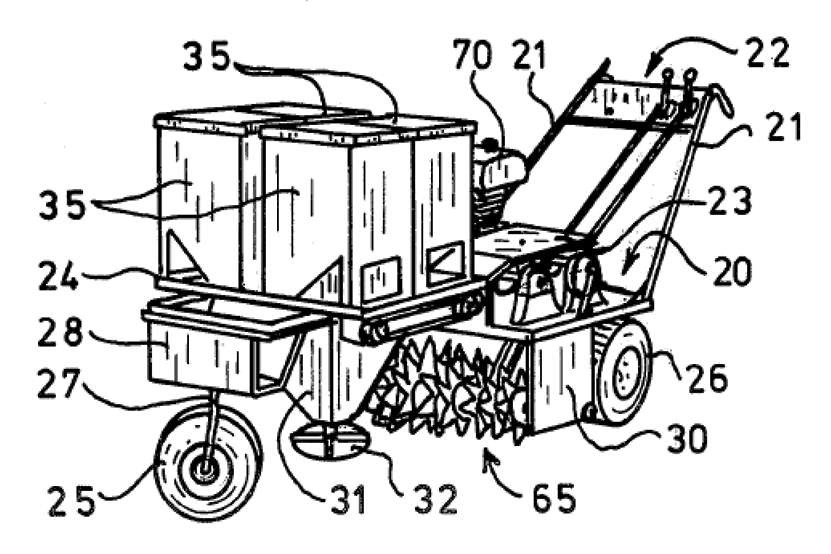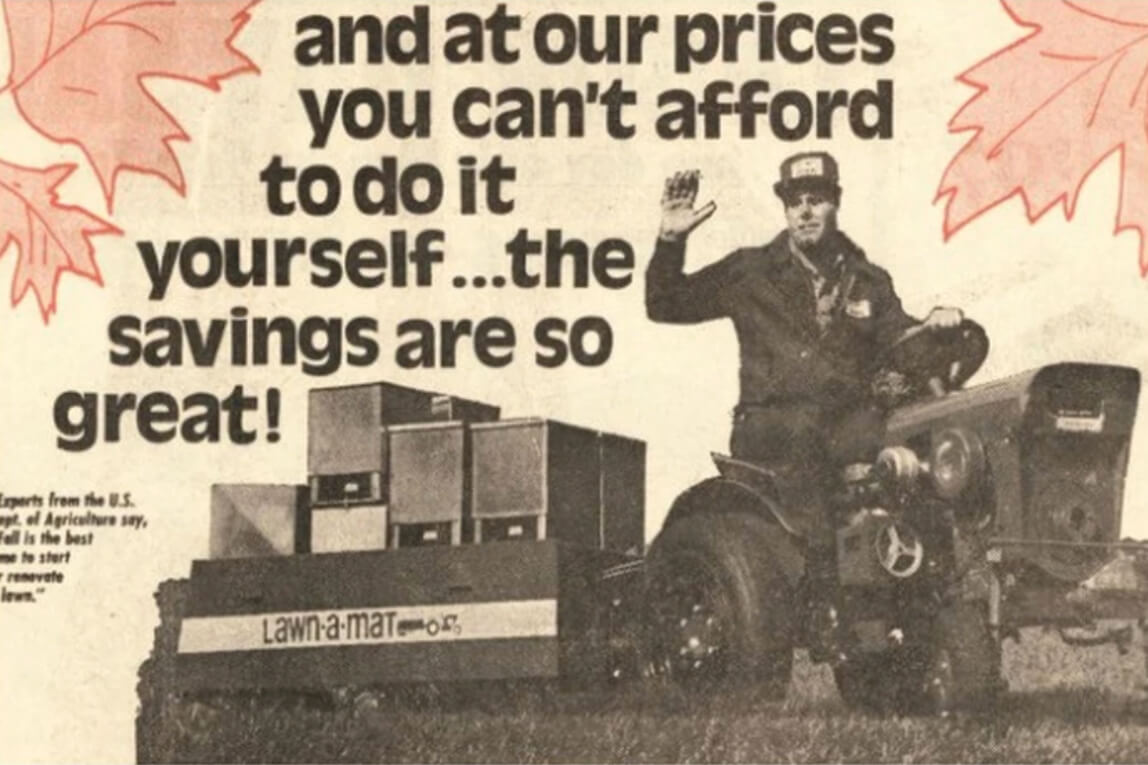March 1, 2019
The endless quest for faster and better
Productivity drives profit
Efficiency and productivity: the eternal promise of new products. That is the dream today, just as it was in the ’70s. An odd-looking machine called Lawn-A-Mat promised that dream to lawncare operators — imagine a contraption that could seed, aerate, roll, fertilize and spray in one pass. It was actually a combine, but built for lawns, not crops.
An inventor from Brooklyn, N.Y., had the idea and actually built a working Lawn-A-Mat machine in 1961. It received U.S. Patent 4,196,678; “A lawn combine which has a frame including a plurality of rotatable wheels supporting and coupled to a frame and a drive-actuated rotatable aerator movably mounted…” Daniel Dorfman proceeded to build a franchise structure around the idea, and by 1968 he had sold over 300 franchises.
Retired lawncare pro Don Voorhees of Pickering, Ont., operated Lawn-A-Mats in the eastern GTA in the ’70s. His territory supported three machines and trucks, with three employees. “Sure, there was a great labour advantage,” Don recalled, noting labour is not a challenge unique to our times.
Don has pleasant memories of being in a community of about 50 operators, and says he remembers participating in well-run Lawn-A-Mat meetings, and also recalls enjoying its social events.
He was introduced to Lawn-A-Mat while working for a paper company; Lawn-A-Mat was his entry to the horticulture business and a life-long career.
An inventor from Brooklyn, N.Y., had the idea and actually built a working Lawn-A-Mat machine in 1961. It received U.S. Patent 4,196,678; “A lawn combine which has a frame including a plurality of rotatable wheels supporting and coupled to a frame and a drive-actuated rotatable aerator movably mounted…” Daniel Dorfman proceeded to build a franchise structure around the idea, and by 1968 he had sold over 300 franchises.
Retired lawncare pro Don Voorhees of Pickering, Ont., operated Lawn-A-Mats in the eastern GTA in the ’70s. His territory supported three machines and trucks, with three employees. “Sure, there was a great labour advantage,” Don recalled, noting labour is not a challenge unique to our times.
Don has pleasant memories of being in a community of about 50 operators, and says he remembers participating in well-run Lawn-A-Mat meetings, and also recalls enjoying its social events.
He was introduced to Lawn-A-Mat while working for a paper company; Lawn-A-Mat was his entry to the horticulture business and a life-long career.
 Lee Ann Knudsen
Lee Ann Knudsen
The machines were reliable, Don said, and their novelty was a big part of Lawn-A-Mat’s attraction for customers. The combine was well-suited to a time when 3- to 4,000 sq. ft. lawns and wide gates were much more common, he said, but “it would never work with today’s smaller properties.”
The quest for efficiency, of course, never ends. It brings thousands of landscape pros together at trade shows — shopping, planning and working toward profitability. Landscape Trades columnist Mark Bradley is a great evangelist for promoting efficiency, and often guides landscape pros through their numbers, to show how equipment can save man-hours and expense. Mark’s column on production rates in this issue helps distill all variables, including equipment performance, into metrics that promote more control and better profits.
Our readers consistently rank product announcements as high-interest content; the survey we conducted this January affirmed it once again. With that in mind, please enjoy this special new products issue, and you can count on new product updates every time Landscape Trades hits your mailbox.
Yesterday, Lawn-A-Mat; today, robotic mowers; tomorrow, who knows?

